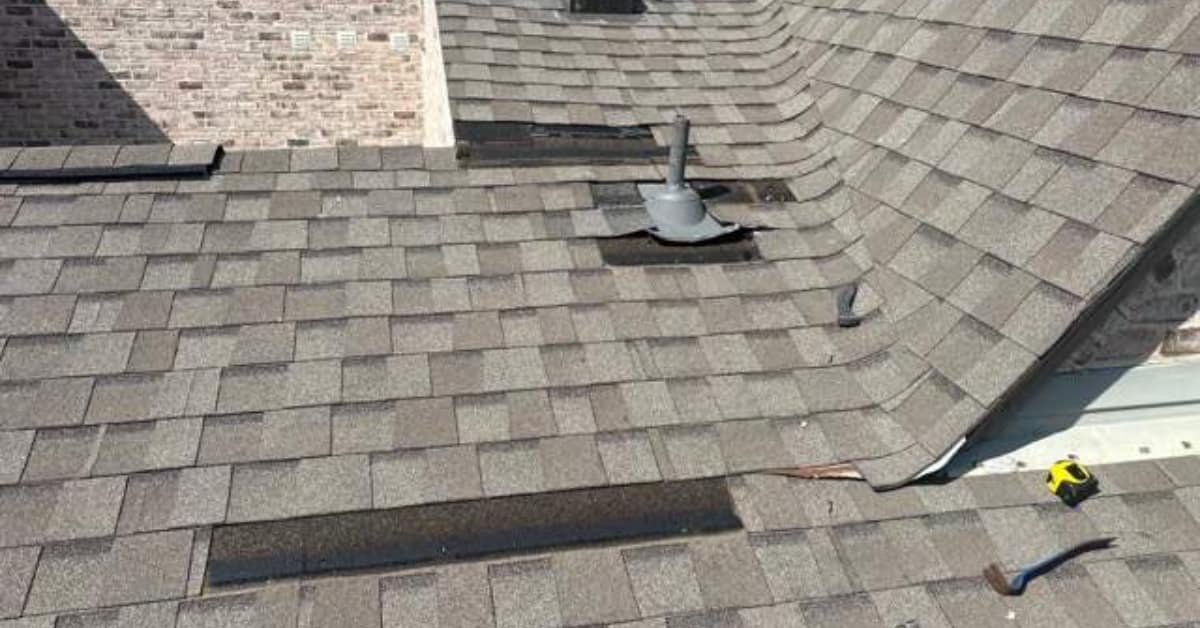-
A sagging roof shouldn’t be ignored. It signals internal weaknesses in framing, water damage, or excess weight. The problem won’t resolve itself.
-
Texas weather is extraordinarily tough on structures. High heat, wind, and heavy rain will compound your sagging roof problem.
-
Early inspection by a qualified roofer could stop a repairable issue from becoming a full roof replacement, but even if you’re past that point, the time to act is now.
No one wants to see it: You’re pulling into your driveway after a long day at work, and you notice your roof is sagging. This isn’t a cosmetic problem, and it needs to be acted on quickly. Roofs are built to carry weight evenly across the framing, so when a roof is sagging, that indicates deeper structural problems are at play.
Texas weather won’t go easy on a sagging roof. High heat, strong wind, and heavy rain will continue to put pressure on every part of the roof and make the problem worse. In other words, the issue can spread fast and lead to leaks or deeper structural damage. So act quickly. Here’s what Texas homeowners need to know about a sagging roof.
1. What Causes a Sagging Roof?
Structural problems are the most common reasons a roof is sagging. Rafters or trusses might be too small for the span or inadequately braced. In older homes, wood framing can dry out, crack, or separate at joints, leading to sagging. Interior walls or foundation movement could also be the problem, pushing framing out of alignment. To this end, improper installation may have played a role, such as rafters being spaced too far apart.
Water damage is another big culprit. A slow leak can let water soak into the decking and rafters. Over time, the wood will soften and lose its ability to hold weight. If your attic is poorly ventilated, this can compound the problem by trapping heat and humidity in the air, which speeds up decay and rot. Pest damage is also worth consideration: termites or carpenter ants can hollow out beams and rafters.
Too much load is another possibility. It’s possible your roof, with multiple layers of shingles or heavy tiles, is straining the framing. But debris buildup, pooled water, or short bouts of snow can add additional weight, which may exceed the roof’s design limits. Weak or damaged sheathing may cause sagging between rafters too, bowing under the weight of shingles or water.
2. What to Do About a Sagging Roof
A sagging roof means the load is no longer shared evenly across its structure, and this resulting imbalance will result in additional damage elsewhere, such as cracking drywall, opening up surfaces to leaks, and, in serious cases, even partial collapse.
A safe first step is a visual check from the ground. Look for a dip along the ridge line or center span. Inside the attic, inspect rafters, decking, and sheathing for cracks, separations, soft spots, or dark water stains. If you notice these signs, it’s time to reach out to a licensed roofer or structural specialist.
Repairs may involve reinforcing weak rafters with new materials, replacing damaged decking, or adding bracing to make sure the weight is spread more evenly across the roof. If water or pest damage is found, additional treatment and prevention will be needed to address it. If attic temperature had a role to play, proper ventilation would need to be addressed as well.
Roof problems are always frustrating because so much of the underlying problem is hidden until, suddenly, it isn’t. A sagging roof is a chance to get a full inspection and address deeper problems to keep you from experiencing this frustration again.
We’re Here to Help
Need an expert opinion? Don’t hesitate to contact the DFW Roofer team with your questions about choosing the right roof. Call us at (469) 751-4018 or schedule an appointment through our online appointment form.


